The best OBD2 scanners in 2021
Stashing one of the best OBD2 scanners in your glove compartment can turn out to be critically helpful when your car’s check-engine light suddenly comes on a week before you’re due to have the vehicle inspected, but nothing seems wrong and you can’t figure out why the light is on.
By tapping into the car’s computer systems, the onboard diagnostics (OBD) scanner can tell you whether the problem is due to a faulty $30 gas cap or to a bad catalytic converter that costs $600 to replace.
OBD2 scanners (known as EOBD scanners in Europe) can also let you peer into the deeper recesses of a vehicle’s engine, transmission and other vital systems.
Whether you’re going to visit your dealer’s auto-service center or a third-party repair shop, you should be armed with as much information as possible so you don’t get taken advantage of.
With the knowledge gleaned from the best OBD2 scanners, handy car owners can often do many of the necessary repairs themselves. Others will no longer be at the mercy of repair shops looking to inflate the bill.
We’ve tested dozens of OBD2 scanners and rated them based on features, size, warranty, setup, ease of use and — above all — value. The best OBD2 scanners can diagnose thousands of automotive problems.
OBD2 scanners, also known as EOBD scanners, work on most vehicles sold in the United States since 1996, Canada since 1998, the European Union since 2004, and Australia, Mexico and New Zealand since 2006. (Here’s a page that helps you find the location of your car’s OBD2 port for North American cars, and one for the rest of the world.)
Not all the best OBD2 scanners are created equal. There are two general types of devices:
- Handheld OBD2 scanners come with their own screen and cable to plug into the car’s OBD port.
- Wireless OBD2 scanners plug into the port, but then connect via Bluetooth to a phone or tablet.
The good news is that whichever type of device you choose, there are several high-performance OBD2 scanners that cost less than $100. One of the best OBD2 scanners is no longer an unaffordable luxury, but something you need to have in your car.
What are the best OBD2 scanners?
Overall, the best OBD2 scanner is the Innova CarScan Pro 5210. It offers a relatively big color display and delivers a ton of useful data.
The Innova provides code definitions to help you easily identify car problems and the Repair Solutions2 app helps you get verified fixes and will give you the exact parts you need, recall info and more.
Ancel’s BD310 is another great OBD2 scanner. It does double duty by providing a small but efficient cabled handheld scanner for nosing around under the hood, and it can also wirelessly receive OBD data to serve as an auxiliary gauge inside the cabin to display key engine parameters. It’s quite affordable.
See all of our picks for the best OBD2 scanners below.
The best OBD2 scanners you can buy today
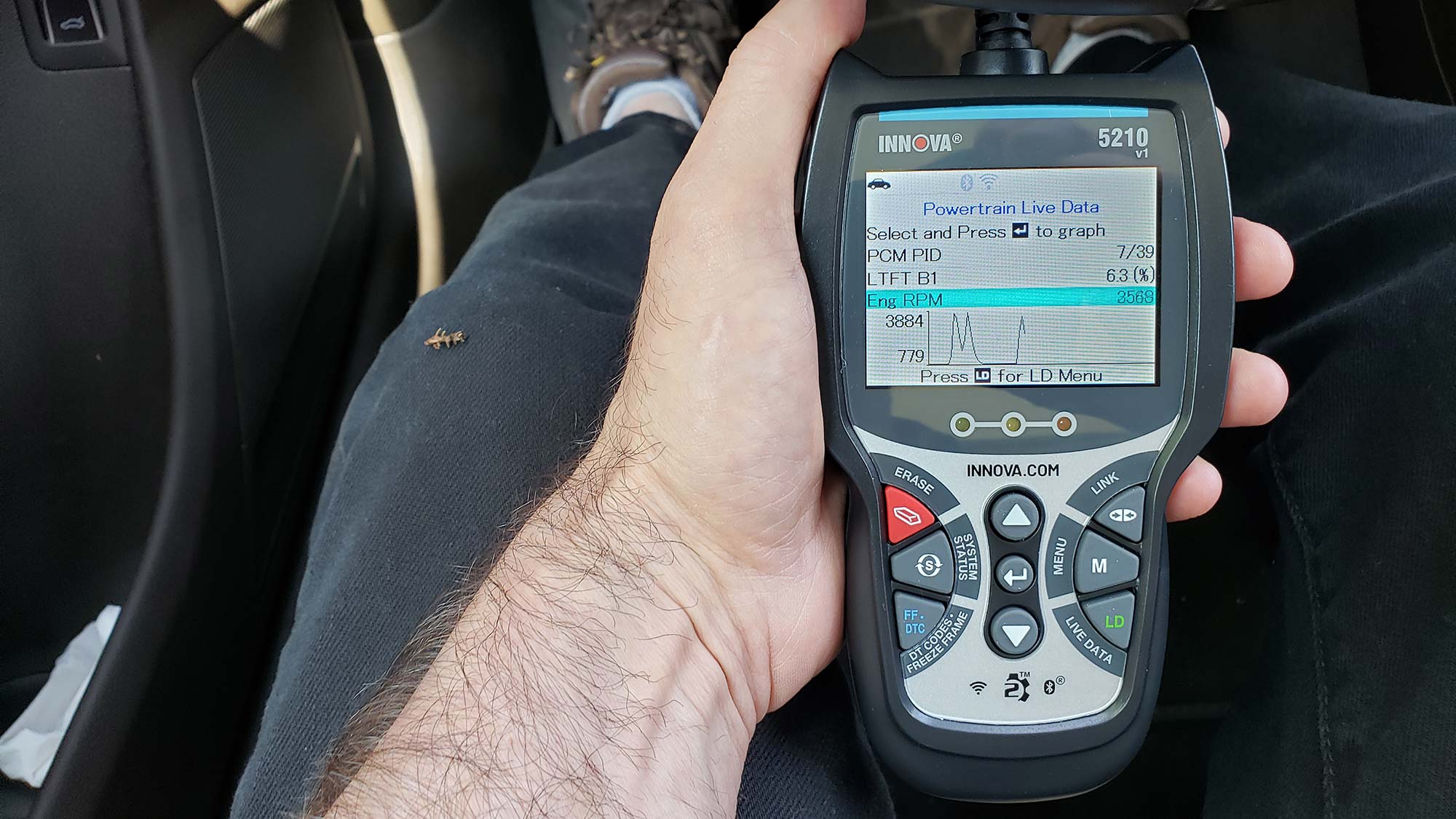

The Innova’s CarScan Pro 5210’s can tell you more about your car than the competition, which is why it is our top pick among the best OBD2 scanners.
The Pro 5210 scanner’s 2.8-inch color screen is bright and its narrow and long aspect ratio means it can squeeze in lots of automotive details, from fault codes to live data to a pre-inspection check. Its LED lights glow red for a permanent fault, yellow for an intermittent fault and green for no problems.
The CarScan Pro 5210 goes beyond displaying the expected fault codes with a Bluetooth connection to a phone or tablet and Innova’s Repair Solutions2 free app. The software explains the repairs and even the parts needed to fix the car.
With a 9-key interface, the Pro 5210 is one of the easiest of the best OBD2 scanners to navigate. It found the fault I introduced to my 2014 Audi AllRoad and turned off the car’s check engine light.
On the downside, the CarScan Pro 5210 has a 27-inch cable, which is short, and its overall dimensions feel bulky, particularly compared to the smaller and lighter Ediag YA-201. While pricey, the Innova CarScan Pro 5210 Pro 5210 is a must-have for those who want to know what’s wrong with their cars.
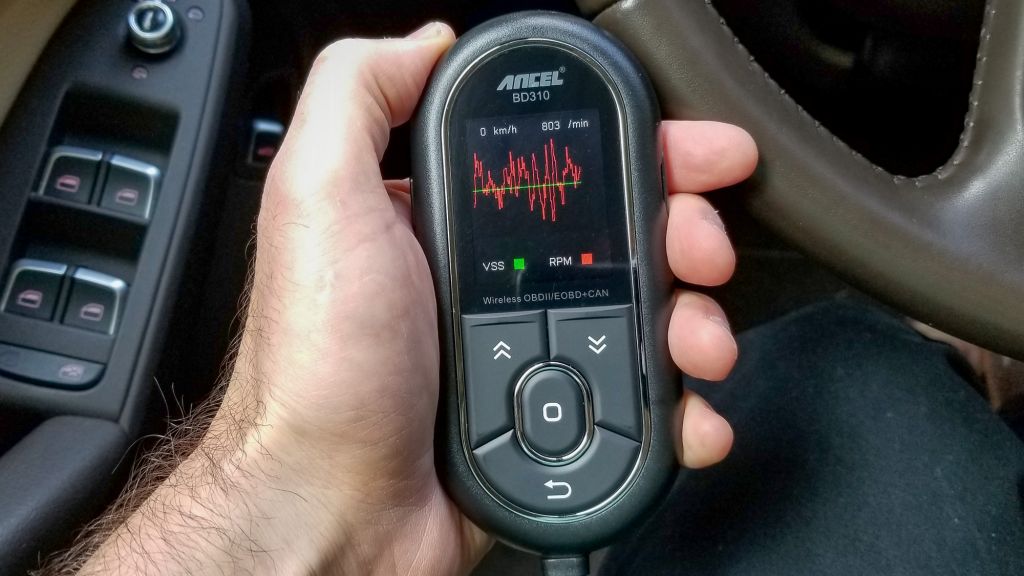
Tops among best OBD2 scanners overall, Ancel’s BD310 is just as good as a handheld scanner with a screen as it is when connected to a phone or tablet via Bluetooth. It can also augment the car’s cockpit with a supplemental display of key engine parameters. Think of it as freedom-of-scanning choice.
Small and lightweight, the BD310 measures 5.1 x 2.4 x 0.6 inches and weighs 5.4 ounces, meaning that it can live in your car’s glove box. Its icon-based, 2.0-inch color display is a little skimpy but easy to figure out, regardless of whether you want an I/M inspection readiness test or performance details, like coolant temperature, engine timing and engine speed. They can be shown as numbers or graphs.
It has a 56-inch cable that makes it just as good for hanging over the hood looking for an engine problem as monitoring the engine while driving. On the other hand, the BD310’s rudimentary four-key interface can make navigation awkward. There’s also a mode button on the side for selecting Bluetooth and cable operation.
This ODB scanner quickly connected with my 2014 Audi Allroad and displayed a graph of the engine speed along with other parameters. Later, it found my introduced fault and was able to turn off the car’s check engine light. The Ancel BD310 includes a three-year warranty and can do so much more than single-purpose scanners.
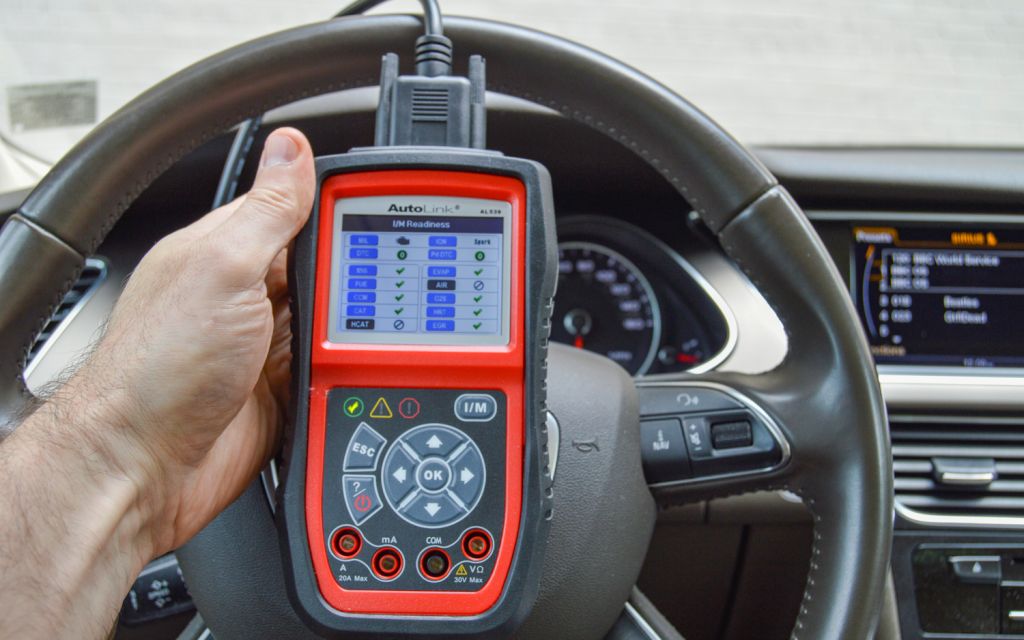
Autel’s AutoLink AL539 is one of the best OBD2 scanners because it does something that most other OBD2 scanners can’t: It can check electrical connections with a built-in multimeter to uncover pesky electrical shorts or burned-out cables. Just note that the multimeter is a stand-alone function that doesn’t work when the AL539 is connected to the car as an OBD scanner.
The AL539 has connectors for the multimeter’s included test cables for doing anything from checking continuity and current to voltage. The device’s lithium-ion battery powers it for checking fuses, the alternator’s voltage or the gas gauge.
The AL539 not only shows live data, like engine speed, coolant temperature and other items but also can run a comprehensive preinspection readiness key. It shows results as three lights for faults: red (permanent fault), yellow (temporary fault) or green (no faults).
Despite its soft rubber bumpers, the AL539 is fairly compact and light at 6.7 x 3.6 x 1.4 inches and 10.6 ounces. It has a unique pull-out leg so the device can stand on its own, as well as a generous 58-inch cable. Its bright, 2.8-inch color display has icons for major functions and an easy-to-follow, eight-key interface.
The AL539 found the fault I introduced into my 2014 Audi Allroad and was able to turn off the car’s check engine light. With a one-year warranty, the AL539 is a dual-purpose scanner that can find more than OBD faults.
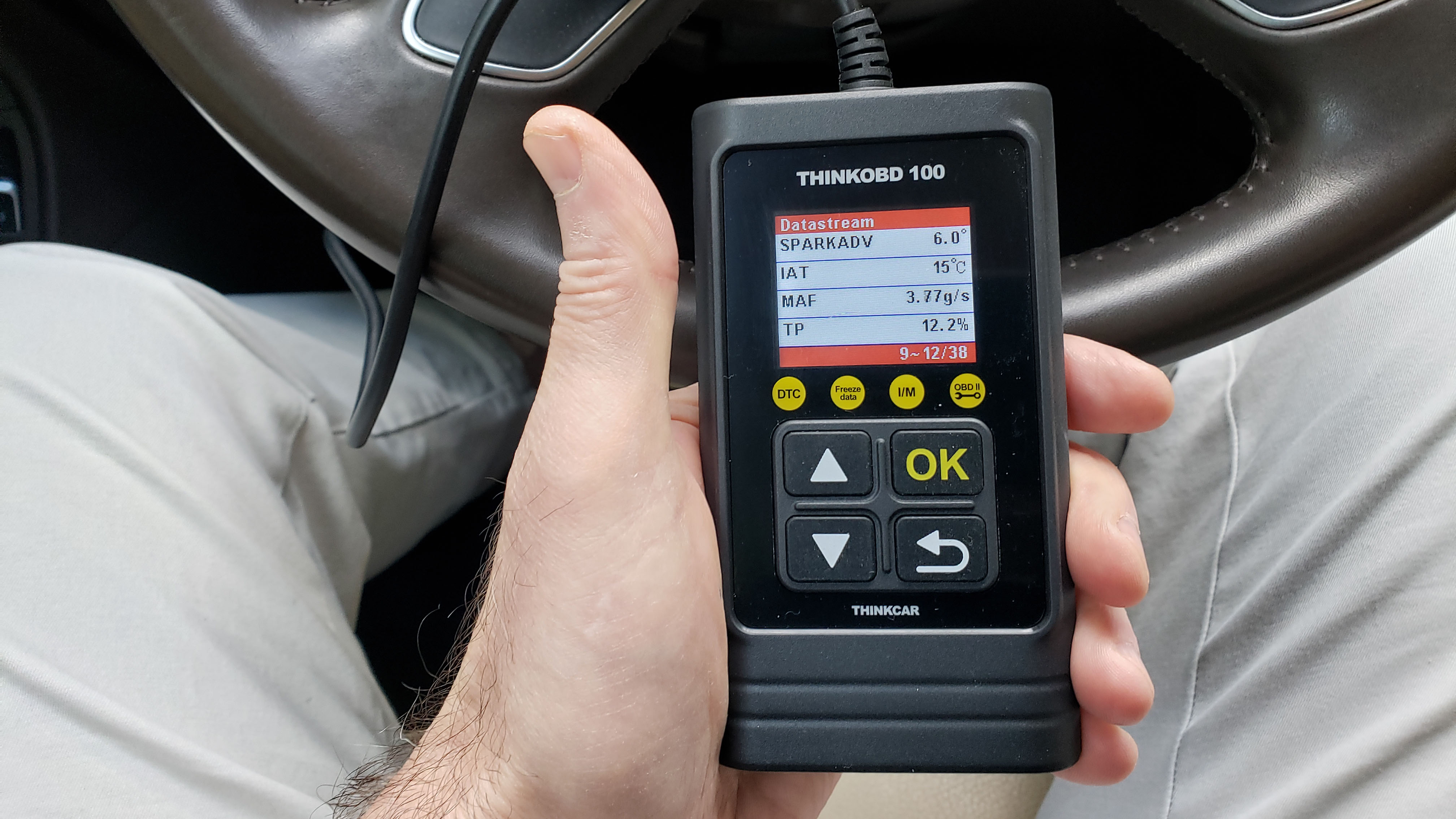
Small and inexpensive, the 5.6-ounce ThinkOBD 100 scanner is perfect for a quickie diagnosis, roadside repairs and running a pre-inspection test. However, it lacks the depth to explain deeper automotive problems.
The ThinkOBD 100 can disappear in a glove box and includes a USB cable for updating its firmware. On the downside, the scanner’s 1.8-inch screen is an inch smaller than many competitors and feels cramped.
Its four-quadrant home screen is simple with entries for Diagnose, Lookup, Setup and Help, but the four yellow circles above do nothing. That leaves the rudimentary four-button keypad as the only way to interact with the scanner.
In addition to displaying current fault codes, the ThinkOBD 100 shows live car data, like spark advance and engine speed, but it spreads the data over 38 pages. After I introduced a fault in my 2014 Audi AllRoad, this OBD2 scanner diagnosed the problem and I was able to turn off the Check Engine light. Unfortunately, I had to manually type the code into the Lookup section to find its meaning.
The device offered no explanation or repair options, making it second best to more advanced (and expensive) handheld scanners, like the Innova CarScan Pro 5210.
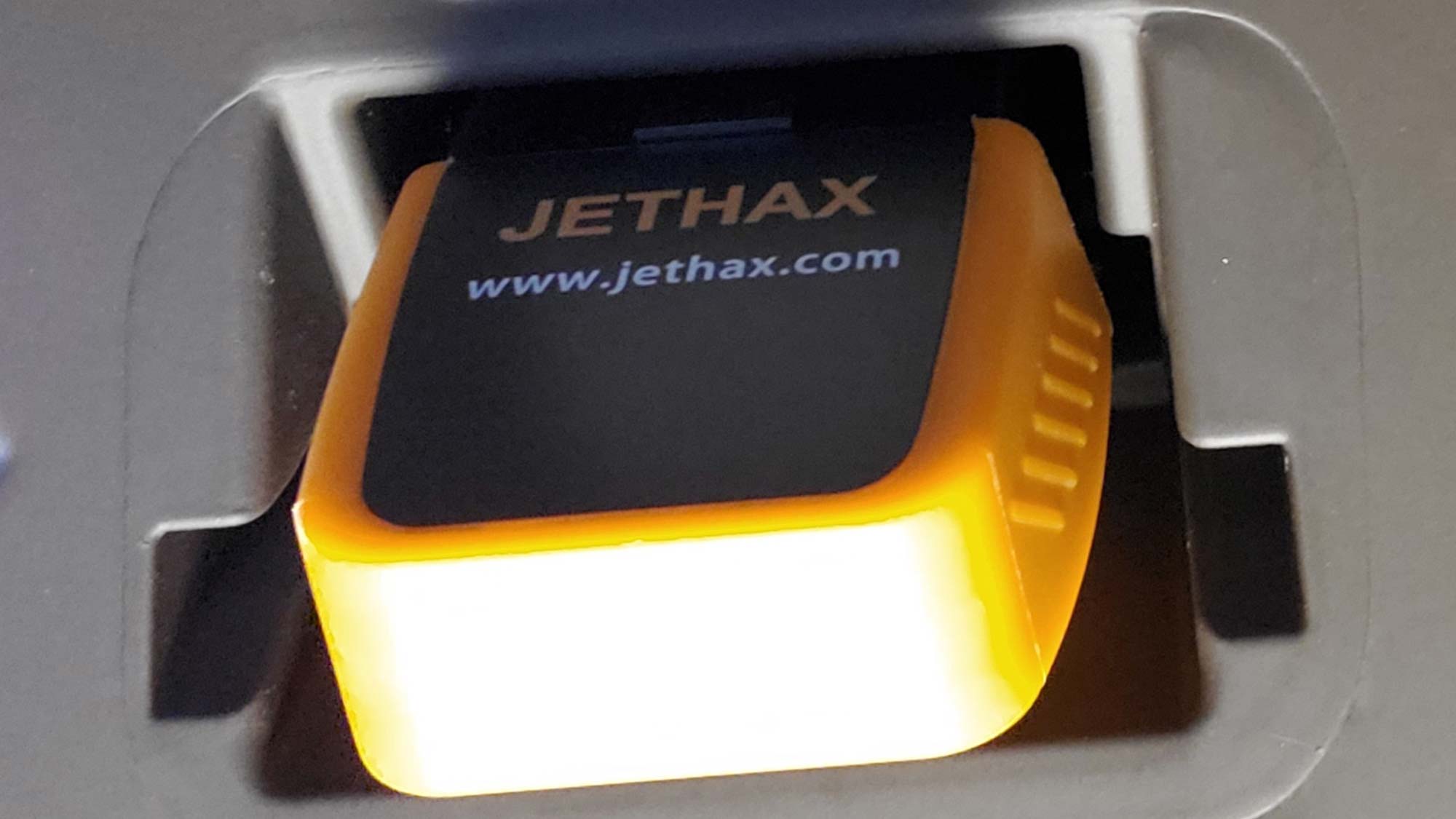
One of the easiest OBD2 scanners to install, use and remove, Jethax’s OBD2 Scanner stands alone with a built-in LED flashlight to illuminate the car’s diagnostic port. Its ribbed sides make it a snap to pull out.
The 1.8 x 1.7 x 0.8-inch unit is slightly bigger than Autel’s MaxiAP AP200 but at only 0.7-ounces, it’s significantly lighter. It has a single LED but it was always red.
The Jethax scanner uses Bluetooth 4.0 to connect to an iPhone, iPad or Android phone but lacks its own app. The QR code on the unit’s box points to several free diagnostic apps, including Torque Lite, which I used with my Samsung Galaxy S9 Plus phone.
After plugging the Jethax OBD2 Scanner into my Audi AllRoad’s OBD port and connecting the scanner to my phone, the app started showing live data. In addition to a series of automotive gauges and fault codes, the system can run acceleration tests.
The Jethax has a 28-foot Bluetooth range, which was on a par with other Bluetooth scanners. It found my introduced fault and turned off the check engine light.
Don’t let its size or $35 price tag fool you. Jethax’s OBD2 Scanner not only tells what’s going on inside your car but lights the way to plug it in.
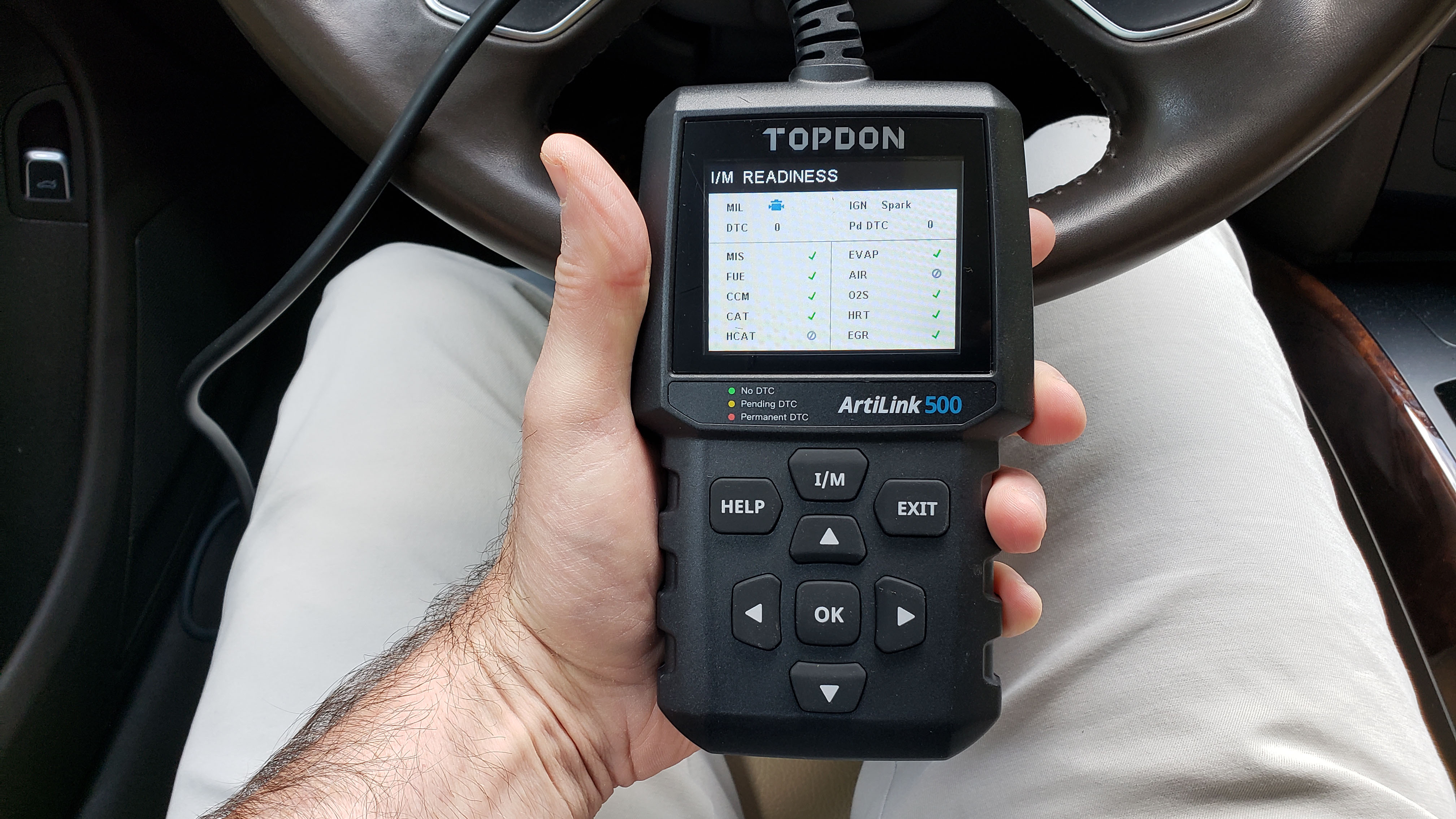
With many of the abilities of a professional OBD scanner, Topdon’s ArtiLink 500 does a lot for its $59 price tag.
Big and bulky, the ArtiLink 500 weighs 10.2 ounces and its 54-inch cable has a lighted connector at the end that helps with plugging the scanner in. The scanner can be updated using its included USB cable.
The ArtiLink 500’s bright 2.8-inch color screen shows fault codes, a pre-inspection readiness report and definitions of what its fault codes mean. The 8-key interface is efficient and lets you pick from the major categories. This OBD2 scanner shows live car data, can graph it and lets you print it.
ArtiLink 500’s OBD database has many of the manufacturer specific codes that widens its scope compared to those that only use only generic codes. After I introduced a problem with my 2014 Audi AllRoad, the scanner showed the fault and zeroed in on the problem. I was able to turn off the check engine light but the scanner stopped short of providing repair advice that the CarScan Pro 5210 does.
At $59, the Topdon ArtiLink 500 provides many of the abilities of a scanner costing much more but is on the big and heavy side.
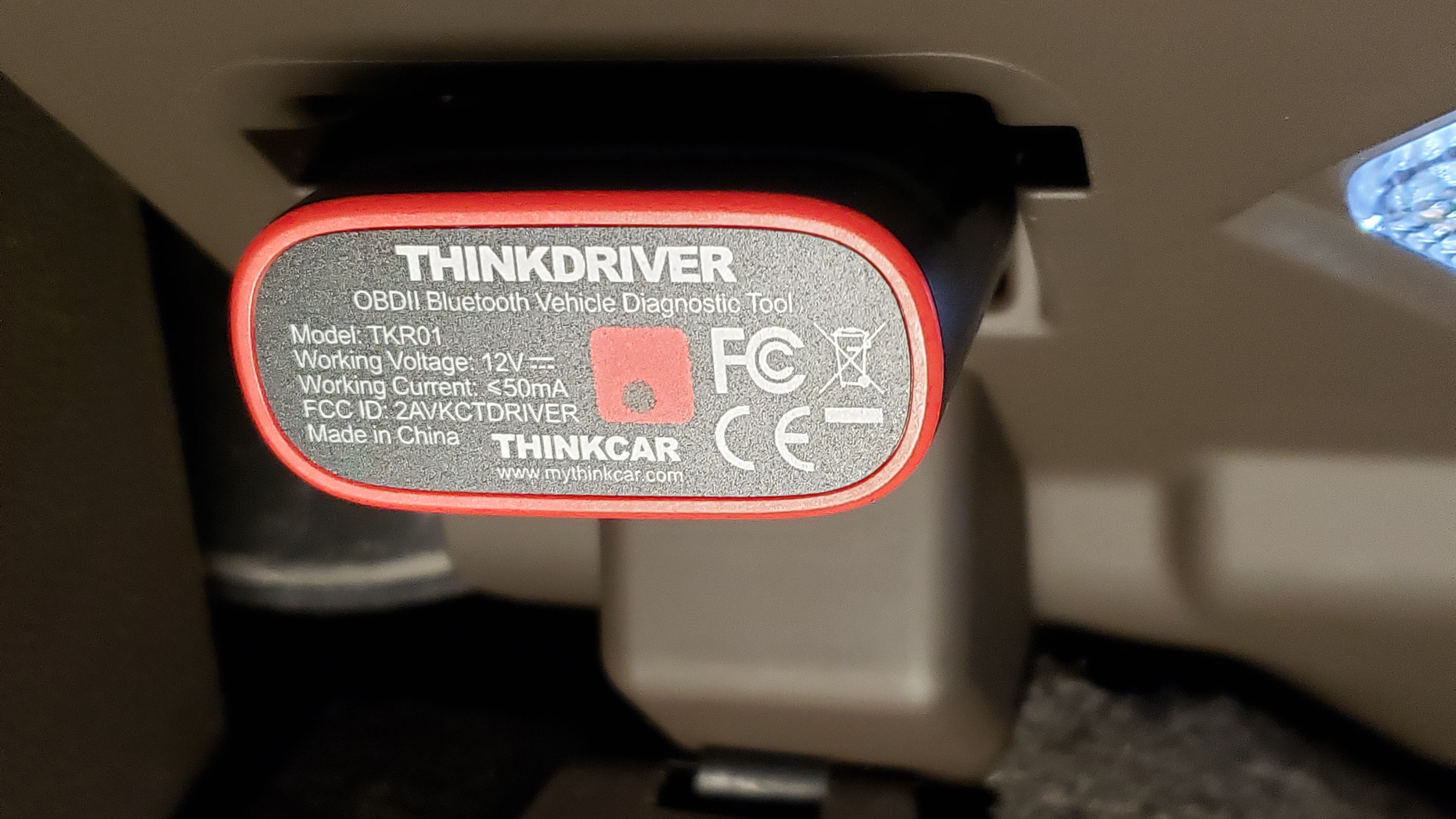
Easy to use, the ThinkDriver Bluetooth OBD2 Scanner ironically is a slow starter. It not only requires an account, an email verification and hardware activation but you’ll need to update the app and firmware. The first time you use it, figure on spending 20 minutes before you get any automotive data.
It’s worth the wait because the ThinkDriver app is more thorough than its competitors. Its dark interface shows all the data needed, including fault codes, live car data, a pre-inspection I/M readiness test and a comprehensive Health Report. It’s one of the rare apps that can reset the maintenance light on your car for things like changing the oil or replacing the EGR valve.
The ThinkDriver Bluetooth OBD2 Scanner’s soft grips make it easy to install and remove and it connected quickly with my iPad Pro and had a 30-foot range; there’s also an Android app. It quickly found my introduced fault and allowed me to turn off the Check Engine light.
Unlike those that supply free software, the ThinkDriver app expires after a year and costs $15 a year for one car after that. Still, at $70, the ThinkDriver Bluetooth OBD2 Scanner is worth it for those who prefer to change their own oil.
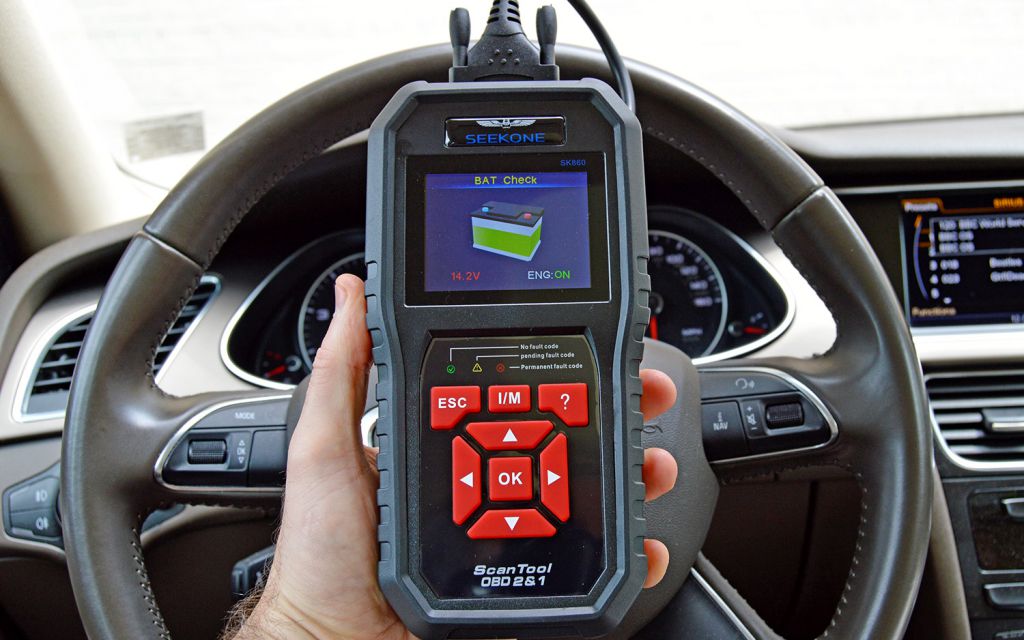
Its large color screen, range of tasks, lifetime warranty and ease of use make the SeekOne SK860 a winner and one of the best OBD2 scanners around.
The price for this is a handheld scanner that at 7.8 x 3.8 x 1.2 inches and 11.2 ounces can feel bulky and heavy. Its soft rubber bumpers and rugged design mean you don’t have to baby the SK860, and it comes with a 58-inch cord and bright, 2.8-inch color display.
Its eight-button navigation scheme and icon-based interface are easier to use than budget scanners. The SK850 has a one-button I/M preinspection readiness key along with a green (no-fault codes), yellow (intermittent problems) and red (permanent-problem codes) LED scheme.
It examined the battery and showed live data, like engine speed, oxygen sensor readings and coolant temperature, then found my introduced fault and turned off the check engine light.
The SK860 does much more than typical handheld scanners and comes with a padded case, but its lifetime warranty makes it stand out from the crowd.
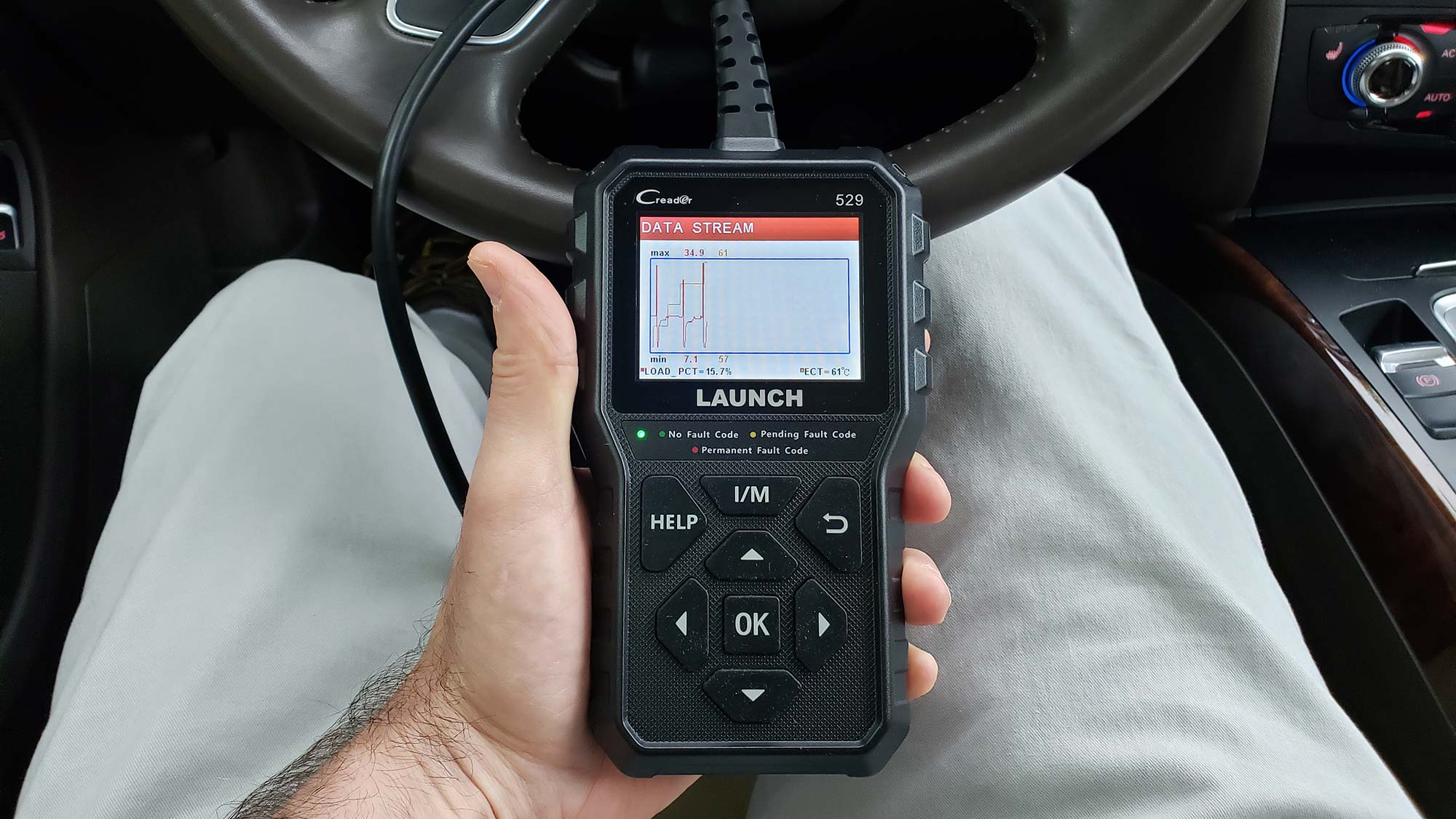
With a rugged design, easy-to-use interface and lifetime software updates, Launch’s CR529 comes close to being a professional OBD scanner at a bargain price. On the downside, at 10.5 ounces and 6.5 x 3.8 x 1.2-inches, it’s bigger and heavier than Innova’s CarScan Pro 5210 and can be a lot to hold during repairs.
Solidly built, the CR529’s ribbed case can protect it if dropped. Its 2.8-inch color screen shows everything from engine misfires and oxygen sensor status to live automotive data and fault codes. Anything can be printed via its USB port but the CR529’s explanations of the problems it finds pale compared to the in-depth repair details of Innova’s 5210.
The scanner’s eight-key format has a dedicated pre-inspection readiness test key, and the scanner’s LEDs light up red for a permanent fault, yellow for an intermittent fault and green for a clean sweep.
The Launch’s CR529’s 43-inch cable quickly connected to my Audi AllRoad, picked up my added fault and let me turn off the check engine light. Unfortunately, it took upwards of 15 seconds for the scanner to respond at times.
The CR-529’s 2-year warranty is combined with lifetime software updates. At less than $50, it’s priced like a DIY unit but has the abilities of a professional scanner.
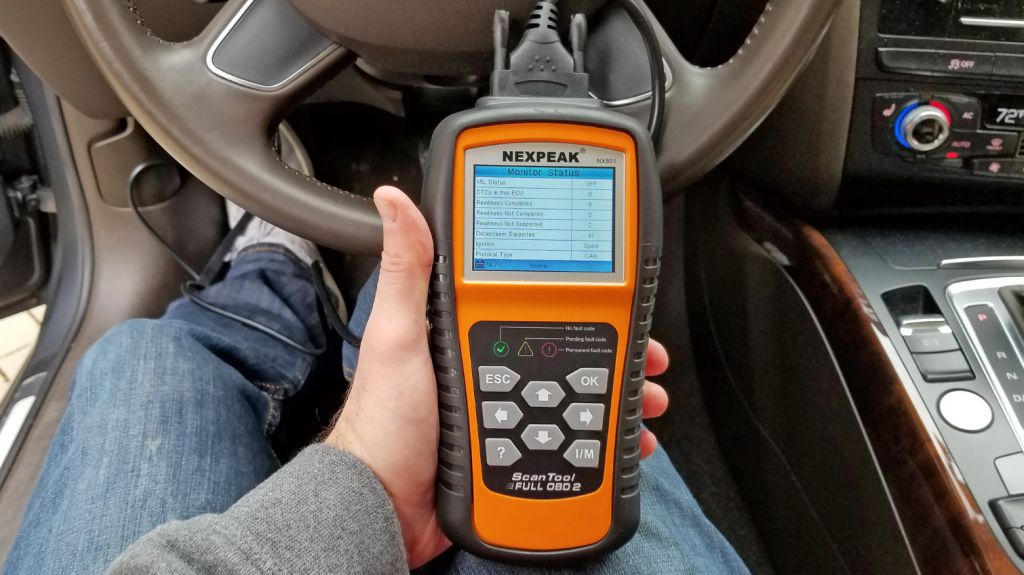
The Nexpeak NX501 may be big and heavy, but it goes beyond the expected car checks with a long 5-foot OBD cable and lifetime software updates.
With soft rubber bumpers, the NX501 is ruggedly built and comfortable to use. Its three LEDs for the I/M preinspection test show green for no faults, yellow for a temporary problem or red to show a permanent fault.
In addition to examinations of the battery and oxygen sensor, the NX501 interprets generic and many manufacturer-specific fault codes. The device quickly noticed the introduced fault on my car and turned off the car’s check engine light.
At 2.8 inches, the NX501’s display is bright with colorful icons for different features, and it can show everything from engine speed to coolant temperature along with colorful fever graphs. The tool’s eight-key navigation makes it easy to move between scanning tasks. With its padded case, lifetime software upgrades and one of the longest OBD cables, the NX501 is one of the best OBD2 scanners for the money.
How to choose the best OBD scanner for you
If you’re looking for insights into how your vehicle is working or what’s wrong under the hood, there’s no better way than to plug in one of the best OBD2 scanners and read the results.
After all, it’s how your car dealer or repair shop would figure out what’s wrong with your car when you drive (or are towed) in. Why shouldn’t you have the same information?
The best OBD scanners provide the right mix of size, weight and the ability to read your car’s fault codes and live data. The most important criteria are:
- Easy setup. If it takes forever to set up the scanner, you probably won’t use it to diagnose a problem early.
- Faults and explanations. The best OBD2 scanners not only tell you the faults your car has but also can explain the meaning so you can either fix it yourself or tell a mechanic.
- I/M Readiness check. A good scanner will run the major engine and emissions tests to see if you’ll pass your state’s inspection.
- Accuracy. A scanner is worthless if its results aren’t accurate, because the only thing worse than no information is incorrect information.
- Size and weight. If the scanner is heavy and bulky, chances are it’ll stay in your toolbox and not in the car to help you on the road.
- Live data. By tapping into the car’s engine speed, timing and other parameters, the right scanner can help track down an intermittent problem.
- Graphs. Numbers are good, but a visual representation of it is much better, particularly if you’re comparing before and after.
- Warranty. You expect your car to last at least eight or 10 years, so why shouldn’t your OBD2 scanner? That said, the best offer a lifetime warranty that should outlast your ride.
There’s a gas tank full of criteria used to determine which OBD scanner is the best one for you. The most important is whether you want one that connects with your phone or tablet’s screen over Bluetooth or a handheld unit with its own display and cable.
Next, think about longevity and get one that includes lifetime warranty or software updates so the scanner will stay current with changing automotive tech.
Then, how about screen size for a handheld scanner? Get the biggest, brightest and easiest display to read that is icon based for easy changes. If you’re clumsy, look at rugged scanners with rubber bumpers to absorb the shock of being dropped.
Look for extras that are included on some models, like an electrical multimeter, the ability to read a manufacturer’s proprietary codes or export documents as Acrobat PDF files.
Finally, the price for these sophisticated devices is right on par with professional-level scanners that are available for under $100. That’s barely an hour’s labor for a qualified mechanic, making it a win-win purchase.
How we test OBD2 scanners
To test the best OBD2 scanners, I used my 2014 Audi Allroad vehicle while it was in the garage or on the road over a period of several weeks. After connecting each scanner to my car’s OBD2 port, I made sure they could report the car’s VIN code.
For the wireless scanners, I connected to my Apple iPad Pro, Microsoft Surface or Samsung Galaxy S9+ phone via a Bluetooth or Wi-Fi connection. The handheld scanners only needed to be plugged into the OBD2 port, which provides power.
Next, I measured the cord’s length on the handheld scanners and the wireless range on the others. With the car running, I monitored the engine and other vital systems, and then disconnected the engine’s oil temperature sensor.
Finally, I checked the details provided by the scanner, fixed the problem, turned off the check engine light and erased the error code.
Then I hit the road to see if the scanner could display operating data such as engine speed, timing and coolant temperature. I paid attention to whether the device reported the data as numbers, graphs or auto-style gauges.
Regardless of which OBD2 scanner you use, you’ll need to crack its code. All fault codes have four numbers and a letter prefix:
- Powertrain (P)
- Body (B)
- Chassis (C)
- Undefined (U)
Of the roughly 5,000 diagnostic fault codes available, some are generic and apply to all cars, like air temperature and throttle position. For these, the numeric section starts with a 0. Others are specific to individual carmakers and represent either a special piece of hardware or a more in-depth analysis of the problem. These start with a 1.
For instance, if you get a P0098 code, chances are there’s something wrong with the engine’s intake air temperature sensor. By contrast, a Ford that displays a P1112 specialty fault code means that the intake air temperature sensor is reporting values intermittently and should be replaced.
For all the latest Technology News Click Here
For the latest news and updates, follow us on Google News.
